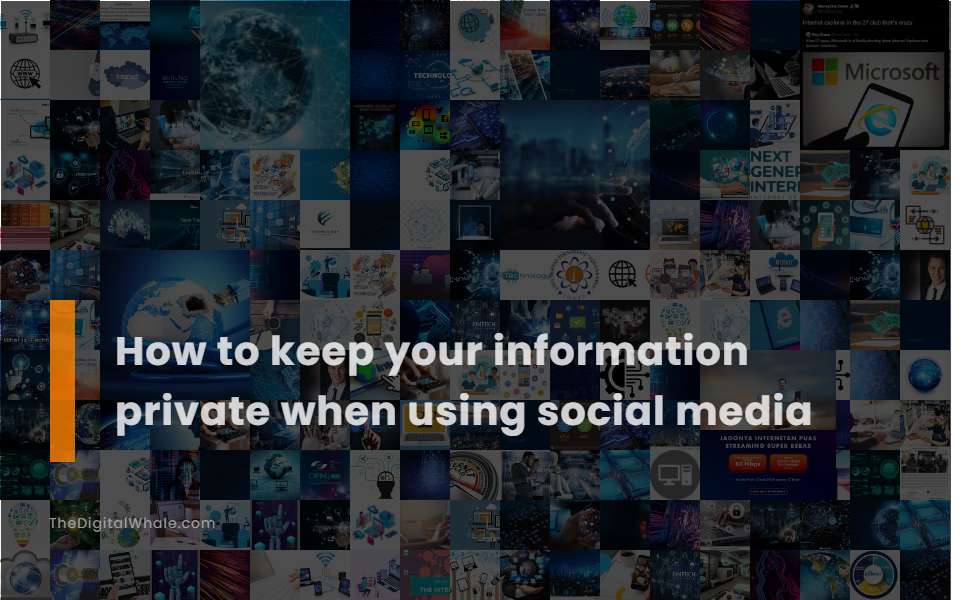How To Keep Your Information Private When Using Social Media
What is the most important thing you should do to protect your privacy on social media? How can i protect my social media privacy if Norton isn't installed? Let's find out more about How To Keep Your Information Private When Using Social Media.

Use strong and unique passwords for each social media account.
Protecting your social media accounts begins with adopting good password practices. It is essential to use strong and unique passwords for each account by selecting a combination of three random words or opting for more complex combinations. This strategy is crucial in preventing unauthorized access. Additionally, using a password manager can help maintain these unique credentials across various platforms without the need for memorization. For more detailed guidelines on securing accounts, you can visit the Trend Micro website, which emphasizes the importance of not using the same password across multiple sites. By implementing these tactics, you significantly reduce the risk of cyber threats and ensure a more secure digital presence.
Enable two-factor authentication (2FA) for all social media accounts.
Enabling Two-Factor Authentication (2FA) on your social media accounts adds an extra layer of security by requiring a second verification step, such as a code sent to your phone or generated by an authentication app, in addition to your password. This approach significantly reduces the risk of unauthorized access and protects your personal data. To learn more about setting up 2FA on social platforms, visit the Worth Ave. Group website, which provides detailed guidance and insights to help you secure your online presence effectively.
Customize and regularly review your privacy settings.
To keep your information private on social media, customize your privacy settings by controlling who can see your posts, profile, and interactions on platforms like Facebook, Twitter, Instagram, and LinkedIn. Regularly review and update these settings, and also manage friend lists, app permissions, and tagging options to maintain your desired level of privacy. For a comprehensive guide on how to adjust these settings, visit the Guide to Adjusting Social Media Privacy Settings by Women Who Code, which offers insightful tips on protecting your online presence.
Avoid oversharing personal information such as address, phone number, and financial details.
In todayâs digital age, preserving the privacy of your personal data is paramount. It is essential to avoid oversharing personal details such as your address, phone number, and financial information on social media. Ensure that your privacy settings are at their highest level to prevent unwelcome access to your information. Additionally, itâs advisable to turn off location settings and be selective with friend and connection requests. For more elaborate insights, the Cybersecurity Focus of the Month: Oversharing provides valuable guidelines on safeguarding your identity. Equally important is keeping personal details like your full name, birth date, and employer information offline. Regular reviews of your privacy settings will further protect against identity thieves and hackers.
Disable geolocation services to prevent location tracking.
To maintain your privacy on social media platforms, it is essential to disable location services by adjusting your phone's settings. For iPhone users, go to Settings, then Privacy and Security, followed by Location Services. Android users can navigate to Settings and then Apps List. Alternatively, you can adjust these settings within the app itself by opting for options like "Don't Allow" or "Allow Only When Using the App" for location access. For further safety, consider checking out additional measures provided by websites like Panda Security, which suggest using a VPN and avoiding public Wi-Fi to enhance privacy and security.
Related:
What are some of the most common red flags of phishing? What is the difference between a link and an attachment in an email? Let's find out more about 3 Red Flags That Indicate You're On A Phishing Website.
Use a Virtual Private Network (VPN) for secure internet browsing.
Using a VPN for social media encrypts your internet connection, masks your IP address, and protects your data from hackers and social media platforms, ensuring your online activity remains private and secure. For more detailed information, consider visiting the Score website, which provides valuable insights into maintaining safe and unrestricted access while engaging with social media networks.
Manage and revoke access to third-party apps connected to your accounts.
Ensuring your information remains private on social media platforms is crucial for safeguarding your online identity. Regularly reviewing and revoking third-party app accesses can significantly enhance your privacy. On Instagram, for instance, you can navigate to the "Authorized Apps" or "Apps and Websites" sections in your account settings to manage and revoke access from any unnecessary apps. Similarly, on platforms like Twitter (now X), it is essential to manage third-party app access by visiting "Settings and privacy," then "Security and account access," and finally "Apps and sessions" to meticulously review and remove permissions for apps that are no longer required. For a detailed guide on this, you can visit Privacy International. These practices help protect your data and reduce potential security risks.
Sign out of social media accounts when using public or shared computers.
When using public or shared computers, it is crucial to always log out of your social media accounts to prevent unauthorized access and protect your personal information. Neglecting to do so can lead to compromised data and potential privacy breaches. For comprehensive guidance on maintaining digital security, consider consulting resources like the Trend Micro Help Center, which provides essential tips and tricks for safeguarding your online presence. By staying informed and vigilant, you can significantly reduce the risk of identity theft and other cybersecurity threats.
Use incognito or ghost mode to minimize digital footprints.
Using incognito or private browsing mode can help minimize your digital footprint on social media by preventing the storage of your browsing history, cookies, and login information on your device. While this feature offers certain privacy advantages, it does not hide your activity from internet service providers, websites, or networks. Furthermore, it does not prevent tracking if you log into accounts. To explore these topics further, you can visit the insightful guide on the Pros and Cons of Incognito Mode provided by Kaspersky. Understanding these limitations is crucial for effectively managing your online privacy.
Regularly download and review your data to ensure it aligns with your comfort level.
Regularly downloading and reviewing your data using the data download and deletion tools provided by social media platforms allows you to see what information is being collected and stored. This enables you to delete any data that makes you uncomfortable and reduce potential risks if that data were ever compromised. For more detailed guidance on safeguarding your privacy, explore the Tools to Protect Your Privacy on Social Media offered by NetChoice. By engaging with these resources, you equip yourself with the necessary knowledge to safeguard your personal information effectively.
Related:
What are the different ways you can access the dark web? What is the Dark Web and why should you access it carefully? Let's find out more about What Is the Dark Web and Why Should You Stay Away from It.
